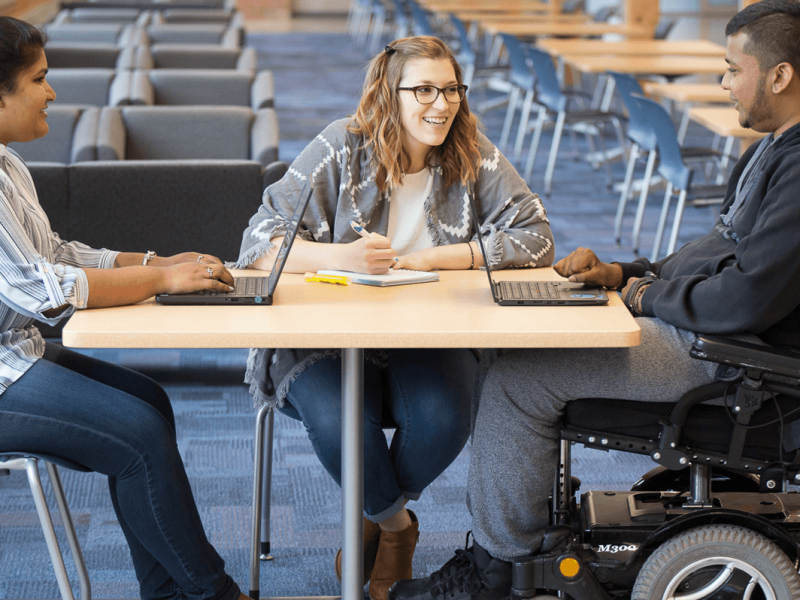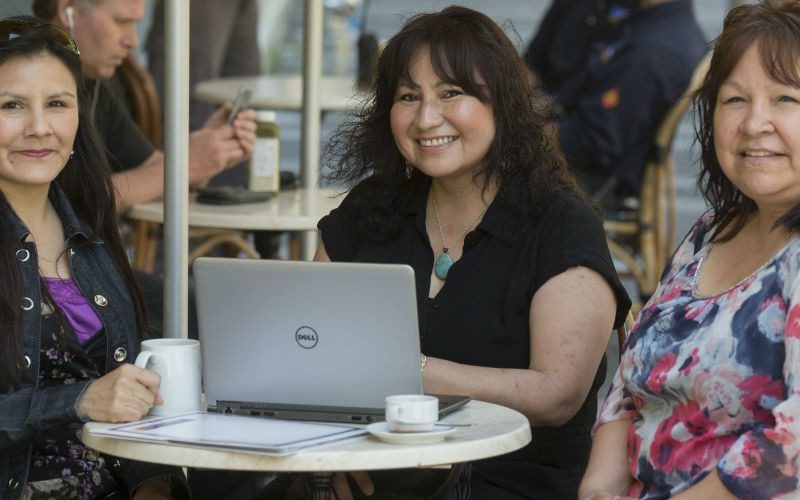
Project INSIGHTS REPORT
Luminary: Advancing Indigenous innovation for economic transformation, employment and well-being
Executive Summary
Indigenous Works, a national Indigenous not-for-profit organization, developed the Luminary Research and Innovation Project to enhance innovation in Indigenous business environments, with the knowledge that more Indigenous-led research is needed to catalyze innovation and community well-being.
Luminary convened Indigenous and postsecondary partners to co-design a five-year strategy to increase research collaborations, spur new networks and partnerships, grow new Indigenous innovations and advance knowledge mobilization so that insights can inform decision-making, improve practices and address real-world challenges.
Using the strategy and plan developed in this project, Indigenous Works received funding from Innovation, Science and Economic Development Canada to implement the developed plan over the next five years.
Key Insight #1
The research and innovation ecosystems could be improved by honouring and respecting both Indigenous and Western values, worldviews and knowledge systems (i.e., Two-Eyed Seeing approach).
Key Insight #2
Developing partnerships and collaborations with Indigenous and non-Indigenous partners is necessary to improve the Indigenous research and innovation ecosystem.
Key Insight #3
Building a good, culturally relevant strategy takes time, and it needs to be guided by strong leadership.
 The Issue
The Issue
The Truth and Reconciliation Commission of Canada identified the importance of postsecondary education and its associated research in furthering reconciliation and the overall well-being of Indigenous communities. Among its many Calls to Action, the commission called for increases in funding for Indigenous postsecondary students and their research; education for postsecondary teachers to adapt curricula and pedagogy; and for a national research program that would advance reconciliation.
These Calls to Action led to the creation of the Canada Research Coordinating Committee and the production of a strategy to guide the building of new models to support Indigenous research and training across Canada’s research granting agencies. Using feedback from 14 regional engagement events, the strategy called for building relationships with First Nations, Inuit and Métis Peoples; supporting the research priorities of Indigenous Peoples; creating greater funding accessibility; and championing Indigenous leadership.
Alongside the consultations that fed into this strategy, Indigenous Works, in collaboration with research funder Mitacs, gathered input from over 500 leading academics, Indigenous businesses and community leaders to identify and discuss issues in Indigenous-led research collaborations and innovation. Feedback from these consultations included the need for long-term relationships built on trust, respect and mutual interests; dedicated funds for community outreach, relationship building and core administrative costs; and tools and resources to connect Indigenous communities with researchers and students. The feedback also emphasized the need to build for Indigenous students educational and career pathways that increase awareness, understanding and leadership skills of Indigenous researchers and students.
 What We’re Investigating
What We’re Investigating
This project aimed to develop a strategy to advance Indigenous innovation, including developmental and foundational activities, services and potential mechanisms that could facilitate opportunities for increased research collaboration and coordination among Indigenous businesses and Canada’s postsecondary researchers, research agencies. The project sought to contribute to the common vision of increasing Indigenous-led research, and to improve the way that this research is moved into active use by practitioners, policy-makers and communities.
To develop the strategy, Indigenous Works engaged 142 partners via workshops, webinars and organized dialogue sessions. Partners included an Elders Council, universities, colleges, polytechnics, an Indigenous student MA and PhD research committee, NGOs, foundations, Indigenous development corporations and Indigenous businesses. During these engagements, participants explored the following questions to inform the development of the strategy and plan:
- What conditions are needed to enable Indigenous people, businesses and communities to identify and prioritize the research needed to address opportunities and problems important to them?
- How can Indigenous people enlist the postsecondary research community and build research collaborations?
- How can that research knowledge be used to the betterment of communities so that new value-creation, products and services can be developed?
- What building blocks of the Indigenous research and innovation ecosystem are needed to create incremental value and well-being for communities?
- What changes and enhancements are needed with the current research and innovation ecosystem?
- How do we cultivate and animate the building blocks so that stronger research and innovation performance can be realized by Indigenous communities and businesses in the future?
Project administrators held 14 dialogue sessions with 250 individuals from 150+ partner organizations to discuss the improvements and changes needed to enhance Indigenous research and the innovation ecosystem. This engagement resulted in the production of a five-year strategy and plan to address the many issues currently inhibiting the takeoff of Indigenous-led research and the use of research knowledge for commercial innovation.
 What We’re Learning
What We’re Learning
The five-year strategy includes key issues, opportunities, commentaries and a brief description of the possible program and service offerings in response, on eight themes:
- Growing Indigenous research talent;
- Developing Indigenous curricula, knowledge and student supports;
- Growing research collaborations;
- Increasing innovation awareness, education and skills;
- Building Indigenous leadership and institutional capacity for research and innovation;
- Creating knowledge transfer and mobilization strategies;
- Identifying and supporting Indigenous business innovation needs, priorities and innovation clusters;
- Evaluating and measuring economic transformation, employment and well-being.
The vision for the plan is to grow Indigenous research talent, develop new research and innovation collaborations, design new knowledge mobilization and sharing hubs, and measure the impact of innovation on Indigenous socioeconomic well-being in Canada.
Advancing collaborative strategies requires backbone support
The plan developed through the consultation included an ongoing role for Luminary in facilitating and continuing to coordinate action across the group of partners. This highlights the importance of having intermediaries to facilitate collective, coordinated actions. Supportive intermediaries provide the infrastructure for collaboration through event planning, facilitation, note-taking, and feedback synthesis between meetings. Intermediaries facilitate common understanding of issues and opportunities, and support consensus building on what needs to happen going forward. Luminary included detailed plans about their ongoing role in the implementation of the five-year plan.
Indigenous values, worldviews and knowledge systems enhance research and innovation
In the Luminary dialogues, participants from 150+ partner organizations highlighted Two-Eyed Seeing, the Medicine Wheel, the Two-Row Wampum, and Inuit Qaujimajatuqangit Principles as common principles that can enhance the research and innovation ecosystem. For example, the Two-Eyed Seeing approach honours and respects both traditional and Western ways of knowing.
Growing Indigenous research should be prioritized
The Luminary dialogues emphasized the need to establish and enhance support structures for Indigenous student researchers, such as by creating a national network, improving databases, and organizing annual events for professional development. They also highlighted the importance of understanding and facilitating career pathways for Indigenous student researchers through collaborating with partners, researching career paths, and developing career planning resources and activities. An example of how to improve collaborations would be to provide matchmaking services to facilitate connections between Indigenous communities and postsecondary research institutions.
Strategies for research and data governance must be developed
Indigenous research and knowledge can drive Indigenous economies, industries, cultures and well-being when used appropriately. Participants emphasized that Indigenous research and knowledge must be collected, stored and managed effectively. To achieve this, strategies for research and data governance must be developed to address the inadequacy of current intellectual property laws in protecting Indigenous traditional knowledge. As the Indigenous knowledge base expands, protocols are necessary to determine how it is shared and used, including in commercial contexts.
Define terms before collaborating
Initially the project team did not have definitions for “Indigenous innovation” or what makes it unique and distinct from non-Indigenous innovation. To foster understanding across the group of participants, the project partners wrote a paper to clarify the ways that Indigenous innovation was shaped by Indigenous culture, outlook and language. Indigenous people are best positioned to identify innovations and new ideas based on their deep understandings and adaptations to their environment. Their culture, language, perspectives and outlooks inform the ways innovation is shaped and conceptualized. Reflecting on the process, the project team felt it would have been helpful to have written a foundational policy paper at the outset of the project, as it would have reduced confusion about terminology and assisted discussions and communications. The project team created a visual to further support participants to understand how the research collaboration cycle and innovation and value creation cycle are linked.
 Why It Matters
Why It Matters
As described by participants in the sharing circles of this project, there is no Reconciliation without economic Reconciliation.
Indigenous research and innovation is essential to community well-being because it supports the development and use of new ideas that can resolve challenges and grow economic resources.
Indigenous people want to grow their presence in existing postsecondary institutions and shape the research ecosystem to their own ends. They want to decolonize and Indigenize existing postsecondary institutions and expand Indigenous research capacity, programs and funding. They also want to grow—from the ground up—new research systems, designs and practices that are not adapted from Western institutions but are entirely Indigenous-based.
The strategy to increase Indigenous opportunities for commercial innovation is predicated on fostering more Indigenous-led research, providing better access to that research, and creating the right ecosystem and conditions for research and innovation activities and projects.
This project is important because it provides decision-makers a tangible strategy and plan for improved performance of the Indigenous research and innovation ecosystem, creating the conditions under which more research collaborations are made possible; knowledge mobilization is improved; and innovation will result in new products, services and value creation. The project’s engagement methods and dedication to collaborative strategy development hold lessons for others looking to create systems change.
 What’s Next
What’s Next
Indigenous Works was successful in receiving five years of federal Strategic Science Fund support to implement the Luminary strategy and plan. Funding commenced April 1, 2024 and will run until 2029. Luminary was the only Indigenous initiative selected.
More from FSC
Supporting Mid-Career Workers with Disabilities
How to Forecast Skills in Demand: A Primer
Bridging Education and Skills Gaps through Indigenous-Controlled Post-Secondary Education




